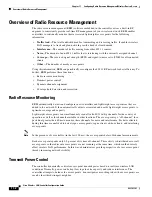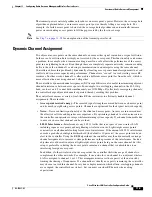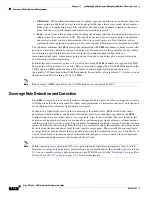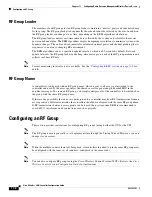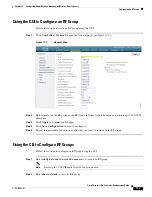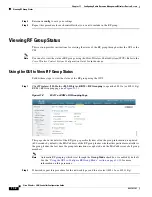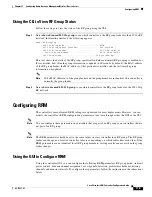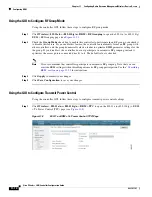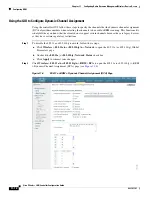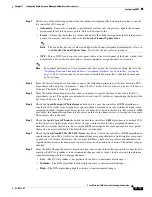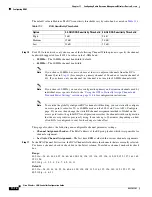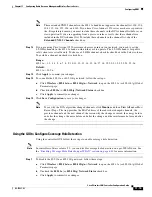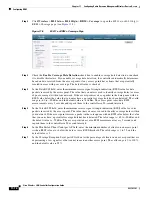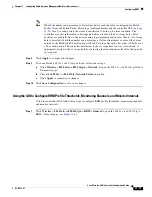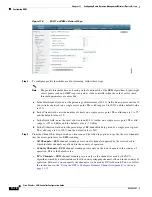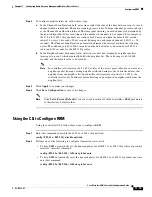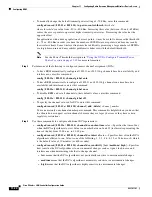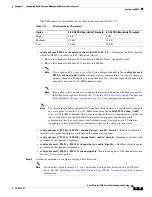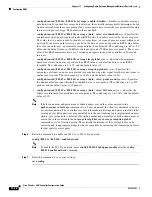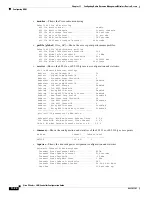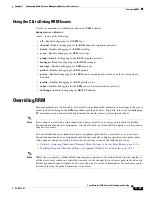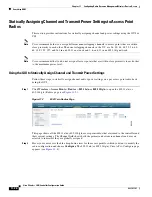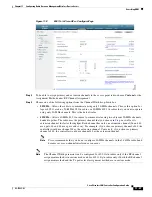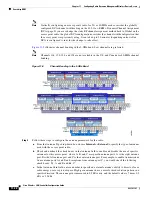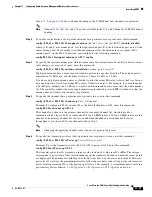
11-16
Cisco Wireless LAN Controller Configuration Guide
OL-17037-01
Chapter 11 Configuring Radio Resource ManagementWireless Device Access
Configuring RRM
Step 2
Click
Wireless
>
802.11a/n
or
802.11b/g/n
>
RRM
>
Coverage
to open the 802.11a (or 802.11b/g) >
RRM > Coverage page (see
Figure 11-5
802.11a > RRM > Coverage Page
Step 3
Check the
Enable Coverage Hole Detection
check box to enable coverage hole detection, or uncheck
it to disable this feature. If you enable coverage hole detection, the controller automatically determines,
based on data received from the access points, if any access points have clients that are potentially
located in areas with poor coverage. The default value is checked.
Step 4
In the Data RSSI field, enter the minimum receive signal strength indication (RSSI) value for data
packets received by the access point. The value that you enter is used to identify coverage holes (or areas
of poor coverage) within your network. If the access point receives a packet in the data queue with an
RSSI value below the value that you enter here, a potential coverage hole has been detected. The valid
range is –60 to –90 dBm, and the default value is –80 dBm. The access point takes data RSSI
measurements every 5 seconds and reports them to the controller in 90-second intervals.
Step 5
In the Voice RSSI field, enter the minimum receive signal strength indication (RSSI) value for voice
packets received by the access point. The value that you enter is used to identify coverage holes within
your network. If the access point receives a packet in the voice queue with an RSSI value below the value
that you enter here, a potential coverage hole has been detected. The valid range is –60 to –90 dBm, and
the default value is –75 dBm. The access point takes voice RSSI measurements every 5 seconds and
reports them to the controller in 90-second intervals.
Step 6
In the Min Failed Client Count per AP field, enter the minimum number of clients on an access point
with an RSSI value at or below the data or voice RSSI threshold. The valid range is 1 to 75, and the
default value is 3.
Step 7
In the Coverage Exception Level per AP field, enter the percentage of clients on an access point that are
experiencing a low signal level but cannot roam to another access point. The valid range is 0 to 100%,
and the default value is 25%.

